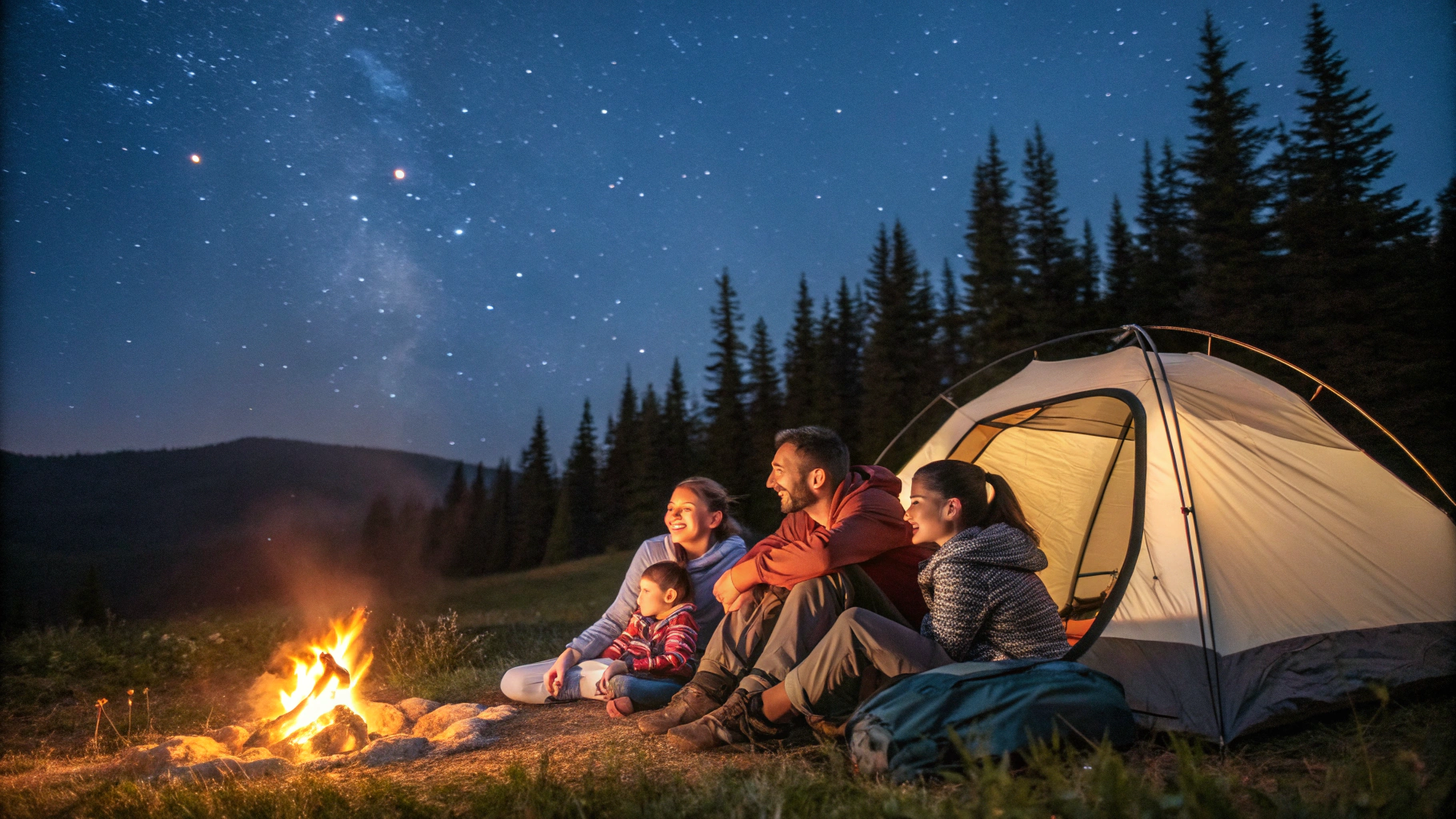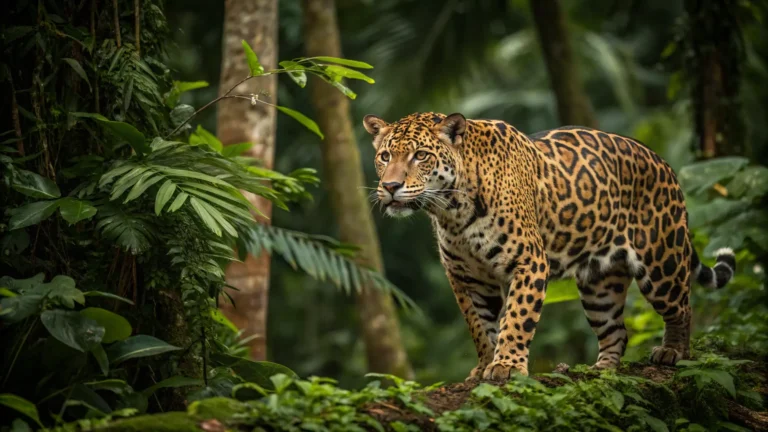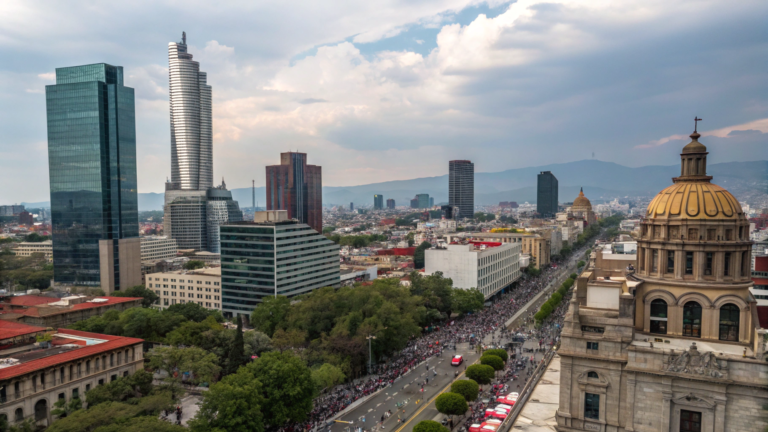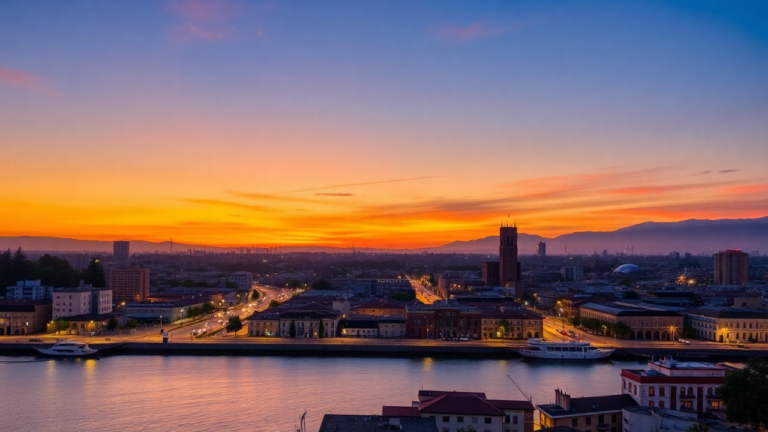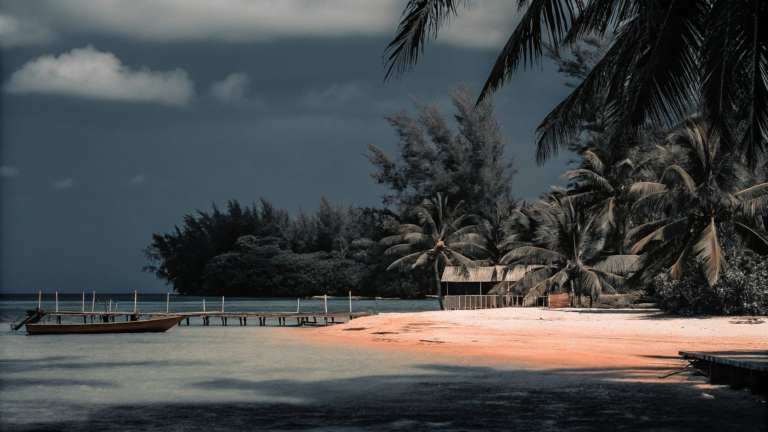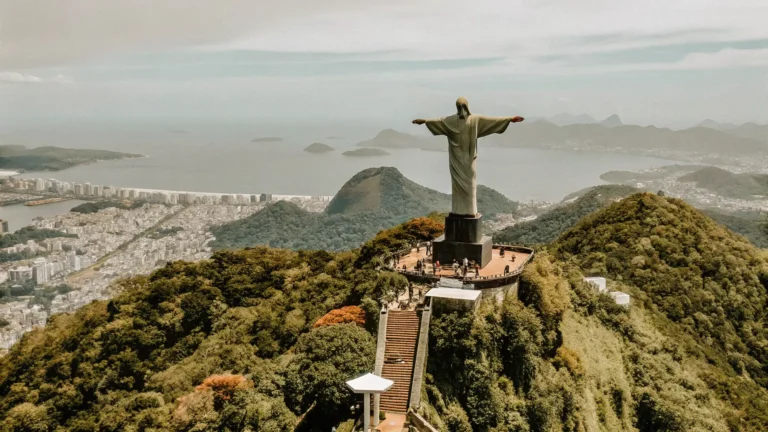Camping With Kids 11 Fun Activities They’ll Love
We’d been stuck in the tent for three hours as rain pounded against the nylon. My 6-year-old Zoe was dramatically sprawled across her sleeping bag, moaning that she was “dying of boredom,” while Max (8) was systematically poking holes in our trail map with a stick he’d smuggled inside.
Not exactly the idyllic family camping trip I’d envisioned.
Just as I was mentally calculating how quickly we could pack up and find the nearest hotel, the rain stopped. Sunlight broke through the clouds, and the kids burst from the tent like they’d been released from prison.
What happened next completely changed my perspective on camping with kids.
Max discovered a massive puddle that had formed near our picnic table. Instead of avoiding it (as I would’ve insisted at home), I watched him jump straight in, laughing as muddy water splashed in all directions. Zoe joined him, and soon they were creating an elaborate canal system, diverting water between rocks and using sticks as bridges.
They played in that damn puddle for TWO HOURS. No screens. No fighting. Just pure, muddy joy.
That night around the campfire, Zoe looked up from her (third) s’more, face sticky with chocolate and ash, and said, “This was the best day ever.”
And weirdly, despite the rain, despite my soaked socks and the fact that everything in our tent was slightly damp… it kind of was.
If you’re considering taking your kids camping — or you’ve tried it and ended up with your own version of tent imprisonment — I’ve compiled 11 activities that have consistently saved my family’s outdoor adventures. These aren’t Pinterest-perfect plans that fall apart in reality; these are field-tested by my own mud-loving, occasionally whiny children in campgrounds across the Northeast.
Table of Contents
Essential Gear for Camping with Kids
Before jumping into activities, let’s talk about what to actually bring, because the right gear makes everything easier. I learned this the hard way during our first family camping trip, when I packed six changes of clothes for each kid but forgot pillows. Rookie mistake.
After years of gradually upgrading our setup (and some spectacular failures), here’s what works:
Age-Appropriate Camping Essentials
| Age Group | Must-Have Items | Optional Comfort Items |
| Toddlers (1-3) | Child-sized sleeping bag, portable potty seat, favorite stuffed animal, extra clothes | Portable play yard, sound machine that won’t die after one night |
| Young Children (4-7) | Headlamp with simple on/off button, child-sized camping chair, unbreakable water bottle | Binoculars that can be dropped repeatedly, magnifying glass |
| Older Children (8-12) | Personal backpack, basic multi-tool (supervised), whistle | Hammock, field notebook, camera |
Don’t forget these family camping essentials:
- First aid kit with children’s medications (no urgent care at 2 AM in the wilderness)
- Weather-appropriate clothing (layers because kids refuse to dress properly)
- Sun protection (sunburned children = camping nightmare)
- Bug spray (the good stuff, not the natural crap that doesn’t work)
- Comfort items from home (we once drove 90 minutes back to a campsite for Max’s forgotten stuffed penguin)
11 Engaging Activities for Camping with Kids
1. Nature Scavenger Hunt Adventures
Last summer at Ricketts Glen, I created individualized scavenger hunts matched to each kid’s interests. Max got a list of weird bugs and reptiles to spot, while Zoe’s list focused on flowers and “fairy houses” (natural formations that look magical).
The kicker? I stuck a pack of Skittles in a hidden container at the halfway point of our hike. Suddenly, two kids who normally complain about walking became enthusiastic hikers, eagerly searching for trail markers.
Their excitement when finding items on their lists was genuine, especially when Max spotted a red eft salamander – his list said “something orange” and he was ecstatic to find such a perfect match.
Try this: Instead of generic scavenger hunt lists, create ones that match your actual location AND your children’s obsessions. My dinosaur-loving nephew gets “evidence of ancient creatures” on his list, which can be satisfied by fossils, unusual rocks, or old bones. My friend’s daughter collects heart-shaped objects, so “heart-shaped leaf” goes on her list every time.
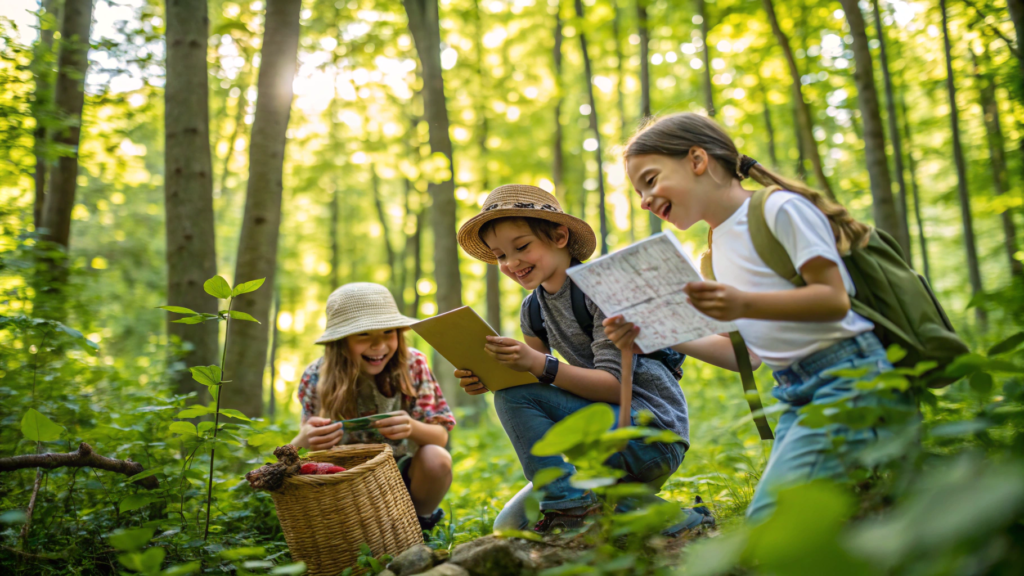

2. Campfire Cooking Experiences
Hands down, food tastes better outdoors. I don’t know if it’s the smoke, the hunger from playing all day, or just the novelty of cooking over fire – but my normally picky eaters become surprisingly adventurous at a campsite.
Our breakthrough moment came when both kids helped assemble foil packet dinners. Max, who considers most vegetables his sworn enemies, willingly added bell peppers to his packet because “I’m making hiker fuel, Mom.”
The absolute winner: breakfast banana boats. Split a banana lengthwise (leaving the peel on), stuff with chocolate chips and mini marshmallows, wrap in foil, and heat until melty. My children now rank these above birthday cake in the hierarchy of desserts.
Kid-Friendly Campfire Recipes We Actually Make:
- Walking tacos (individual bags of Fritos topped with pre-cooked taco meat kept warm in a thermos)
- Campfire pizza (English muffins, sauce in squeeze bottle, pre-shredded cheese)
- French toast sticks (pre-cut bread dipped in egg mixture in a shallow container, griddled over fire)
- Anything on a stick (because food on sticks is automatically better)
3. Stargazing and Night Sky Exploration
Our first night camping in rural Pennsylvania, both kids were unusually quiet as darkness fell. Finally, Zoe whispered, “Mom, I can see the whole sky!” We live near enough to city lights that stars at home are faint and few.
That night sparked an ongoing obsession with constellations. Now we bring glow-in-the-dark star stickers to put on the tent ceiling during the day. After dark, we take turns telling stories inspired by the constellations we’ve spotted.
One particularly clear night in the Adirondacks, we counted 27 shooting stars. Max insisted on making a wish on each one, which led to increasingly ridiculous requests. By star 20, he was wishing for “a pet dragon that only eats Brussels sprouts.”
Stargazing Activities That Worked:
- “Star bed” (laying sleeping bags out under the stars before moving to the tent)
- Night sky bingo with common constellations
- Making up our own constellations based on what shapes we see
- Recording voice memos of our star stories to replay at home
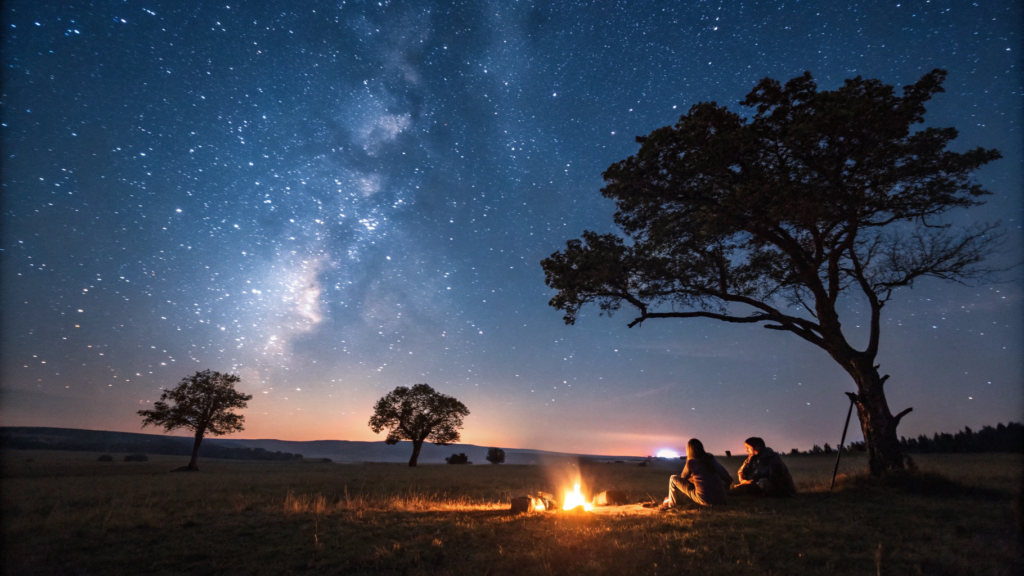

4. Wildlife Watching and Tracking
Kids are naturally drawn to animals, but wildlife watching requires patience – not exactly a common childhood trait. The game-changer was giving each kid their own pair of binoculars and a field notebook.
During a weekend at Shenandoah, we spent breakfast identifying birds at our campsite, then dedicated an hour to sitting quietly near a meadow at dusk. The kids’ reward for (relative) stillness? Watching three deer emerge from the woods, including a fawn that Max still talks about a year later.
For younger kids who can’t sit still, tracking works better than watching. Finding and identifying animal prints, scat, or other signs keeps them engaged and moving. Zoe once spent an entire hike looking for animal homes – she found everything from tiny insect galls on leaves to a massive hollow tree with claw marks.
Wildlife Watching Tips:
- Start with common, visible wildlife (squirrels, chipmunks, easy-to-spot birds)
- Create “research projects” – Max spent one trip documenting every chipmunk he saw
- Make wildlife cards before your trip with pictures of animals you might see
- Bring an animal tracks guide that includes scat identification (trust me, kids love poop)
5. Campsite Fort Building
Give children sticks and permission to build something, and you’ve got hours of independent play.
During a long weekend at Letchworth, my kids and our friends’ children spent entire afternoons building what they called “Camp Wilderness” – an elaborate structure of fallen branches, rocks, and leaves. What started as a simple lean-to evolved into a compound with “rooms,” furniture made from stumps, and a “kitchen” area with rock counters.
The adults actually got to have uninterrupted conversations while the kids problem-solved, negotiated resources, and worked together without fighting. It was like witnessing a miracle.
Safety Guidelines:
- Establish clear boundaries for collecting materials
- No pulling branches from living trees
- Regular tick checks (the one downside of playing in leaf litter)
- Disassemble everything before leaving – leave no trace
6. Outdoor Art and Crafts
I’m not crafty. My version of crafting at home involves opening an Amazon box of pre-packaged art supplies. But somehow, nature-based art just feels more accessible and less messy than regular crafts.
The project my kids ask for every trip: leaf bashing. We collect interesting leaves, place them between two pieces of white fabric, and gently hammer them. The natural pigments transfer to create leaf prints. Zoe now has a collection of pillowcases decorated with leaves from different parks we’ve visited.
For rainy days, we bring blank paper and crayons with the wrappers peeled off. Leaf and bark rubbings kept both kids occupied during an unexpected downpour at Allegheny State Park last summer.
Nature-Inspired Craft Ideas:
- Rock stacking and balancing contests
- Natural weaving with found sticks and grasses
- Mud painting (exactly what it sounds like – embrace the mess)
- Fairy houses built from natural materials
7. Flashlight Tag and Night Games
The first time I suggested playing outside after dark, you would have thought I’d proposed something scandalous. “We’re allowed to be outside when it’s DARK??” The forbidden nature of nighttime play makes it instantly appealing.
Flashlight tag has become our go-to evening activity, with boundaries clearly defined by our headlamps placed at the corners of our play area. The variation my kids prefer: “Moths and Bats.” One player is the “bat” who wears a blindfold and calls out “echo!” The “moths” must respond “echo!” while the bat tries to tag them by sound alone.
Nighttime Game Variations:
- Shadow monsters on the tent walls
- Glow stick bowling (water bottles and glow necklaces)
- Night hike treasure hunt with reflective items
- Moonlight hide and seek (harder than it sounds!)
8. Junior Ranger Programs
Before kids, I visited national parks for challenging hikes and solitude. With kids, I’ve discovered the magic of visitor centers and Junior Ranger programs.
At Acadia National Park, what I thought would be a quick badge-earning activity turned into the centerpiece of our trip. Both kids worked diligently on their booklets, attended ranger programs, and proudly recited the Junior Ranger pledge. Two years later, Max still has his badge displayed in his room.
The programs vary widely between parks. Some can be completed in an hour; others require multiple days of activities. The consistent element is how seriously rangers take the swearing-in ceremonies – they make children feel like they’re part of something important (which they are).
Benefits of Junior Ranger Programs:
- Structured activities created by education professionals
- Kid-appropriate information about the environment
- Motivation to explore different areas of the park
- That proud moment when they’re awarded their badges
9. Geocaching Adventures
When Zoe started complaining about hiking, geocaching saved us. It transformed “another boring walk” into a high-tech treasure hunt.
Our first successful geocache was at Ricketts Glen State Park. After 20 minutes of searching (and me beginning to think we’d never find it), Zoe spotted a camouflaged container wedged between rocks. You would have thought she’d discovered actual pirate treasure from her reaction.
The contents were nothing special – just a small logbook and some trinkets – but the experience of finding something hidden was thrilling. Now we search for geocaches on every trip, and the kids keep a collection of small items to trade when we find caches with treasures.
Geocaching Tips:
- Download maps/coordinates before you go (cell service is unreliable)
- Bring small items for trading
- Read the hints before searching!
- Choose appropriate difficulty levels (many are rated)
- Always bring a pen to sign the logbook
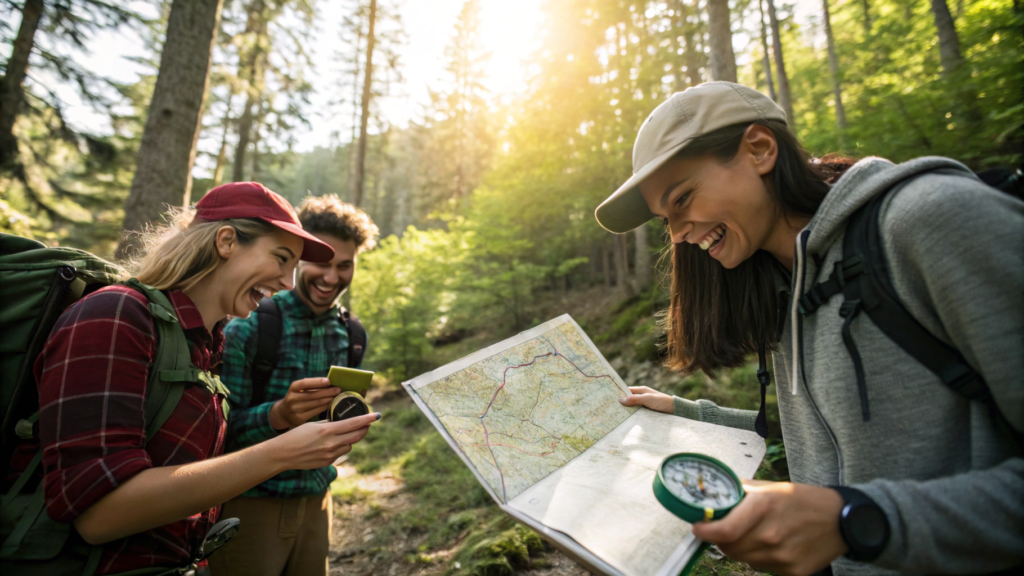

10. Stream and Water Exploration
Nothing – and I mean absolutely nothing – entertains kids like water. A puddle, stream, lake, ocean… doesn’t matter. Add water to your camping experience and entertainment is guaranteed.
During a heat wave at Delaware Water Gap, we spent every afternoon at a shallow stream near our campsite. The kids built a series of dams and channels, creating pools for their “rock pets” (rocks with googly eyes we’d stuck on earlier as a craft).
While they engineered their water system, I read an entire book – the first uninterrupted reading I’d done in months. Worth every soggy shoe and wet towel strung around camp afterward.
Water Exploration Activities:
- Creek stomping (walking in shallow moving water)
- Mini boat races with bark, leaves, or hand-made boats
- Water cycle demonstrations (easier with a stream)
- Simple water quality testing (pH strips are cheap and interesting)
11. Camping Olympics
This was born from desperation during a rainy morning that threatened to derail our multi-family camping weekend. Eight kids aged 4-12 were bouncing off tent walls until one parent suggested Olympic Games.
We created ridiculous events using whatever we had around – pine cone shot put, sleeping bag hurdles, “fishing” for magnetic letters in a water bucket with a stick and string. Teams were formed across families, and adults served as both judges and enthusiastic fans.
The closing ceremony featured awards made from aluminum foil wrapped around sticks, and every child “coincidentally” won at least one event. The kids talked about Camping Olympics for months afterward, and it’s now a tradition for our annual group trip.
Olympic Events Anyone Can Do:
- Water relay with leaky cups
- Marshmallow catching contest (toss, catch in mouth)
- Sleeping bag hop races
- Wilderness scavenger relay
- Log balance beam competition
Making Camping with Kids Educational
I’m not above tricking my children into learning while they think they’re just having fun. Camping creates natural opportunities for stealth education – the kind they actually enjoy.
Integrating Learning into Outdoor Adventures
Some of our best educational moments happen organically. When Max found a strange egg sac on a leaf (which I could not identify and was slightly terrified of), we photographed it, then researched it when we got home. Turns out it was a mantis egg case – which led to a deep dive into insect life cycles that lasted weeks.
Zoe’s rock collection from various campgrounds prompted questions about geology that I couldn’t answer. We borrowed field guides from the library after our trip and learned together about different rock formations. Now she packs her “geology kit” (hammer, magnifying glass, notebook) for every camping trip.
Stealth Learning Opportunities:
- Tracking weather patterns (cloud types, temperature changes)
- Identifying edible plants (with extreme caution and expert guidance)
- Learning to use compass and maps
- Recording bird calls and identifying them later
Safety Considerations When Camping with Kids
My first solo camping trip with both kids after my divorce was a masterclass in anxiety. Every noise outside the tent was clearly a bear/axe murderer/rabid raccoon coming to get us.
Over time, I’ve found that clear safety protocols actually help me relax and enjoy our trips. The kids know the rules, and I know they know the rules. It helps us all feel secure.
Establishing Campsite Rules
Every new campsite, we do a five-minute boundary walk together. I show the kids the physical limits of where they can go without an adult. We identify landmarks they can always see from anywhere within their boundary (usually our tent or picnic table).
Our non-negotiable family safety rules:
- Always stay within the established boundaries
- No wandering off alone
- Three whistle blasts means “come back immediately”
- Headlamps on after dusk
- No approaching wildlife, no matter how cute
First Aid Essentials for Family Camping
After multiple trips where we needed something I hadn’t packed, I’ve refined our first aid kit to include kid-specific essentials:
- Children’s pain reliever/fever reducer
- Tweezers for splinter removal (camping essential)
- Benadryl for allergic reactions
- Anti-itch cream for inevitable bug bites
- Superglue (fixes equipment and seals small cuts)
- Various sizes of bandages (because apparently the size matters deeply to injured children)
Creating Camping Traditions with Your Children
The camping traditions we’ve developed over years mean more to my kids than I ever expected. They now request our “special camping pancakes” for birthdays at home. Max insists on telling one story from our summer camping trip at Thanksgiving dinner every year.
These small rituals – hot chocolate with breakfast regardless of temperature, our “best and worst” game around the campfire each night, taking a photo at the campsite marker before leaving – have become touchstones for our family.
Looking back at photos from our early camping days – when I was overloaded with gear I didn’t need, anxious about every aspect of outdoor parenting, and completely exhausted – I hardly recognize that version of myself. Camping has changed me as much as it’s changed my kids.
The truth is, children don’t care if your tent is fancy or if dinner came from a pouch. They remember how present you were, the freedom they felt exploring, and the stories you told around the campfire. They remember that you let them get really, genuinely dirty. They remember that you played with them.
So pack up, head out, and prepare for moments of both frustration and perfect joy. You’re giving your kids something increasingly rare in this over-scheduled, device-dominated world: unstructured time in nature with the people they love most.
Frequently Asked Questions About Camping with Kids
At what age can I start camping with my kids?
Whenever you’re brave enough! I started with backyard camping when my kids were 3 and 5, then progressed to campgrounds with bathrooms, and eventually to more remote sites. Start small and local so you can bail out if needed. One friend took her 5-month-old camping and it worked fine; another waited until her kids were teenagers. Know your own comfort level.
How do I keep kids entertained while camping when it rains?
Always, ALWAYS have a rainy day plan. Mine includes card games, Mad Libs, comic books, and art supplies in a waterproof container. We also bring a tarp to create a dry outdoor space for when cabin fever sets in. And honestly? Sometimes we just sit in the car and watch a movie on the iPad. Perfect parenting takes a backseat to sanity when you’re trapped in a tent with wet children.
How can I ensure my kids sleep well while camping?
Sleep challenges nearly ended our camping days early on. The game-changers: quality sleeping pads (don’t skimp here), familiar bedding from home, and maintaining bedtime routines. We always read the same books we read at home and bring lovies/stuffed animals. White noise via a battery-powered fan helps mask unfamiliar sounds. And truthfully, exhausting them with physical activity all day is the best sleep aid.
What are some easy meals for camping with picky eaters?
After several mealtime meltdowns that ruined otherwise good camping days, I’ve landed on reliable crowd-pleasers: foil packet meals where kids choose their own ingredients, anything in tortilla form, and deconstructed meals where kids assemble their own plates. I also pack familiar snacks and always have PB&J supplies as backup. Hunger is theoretically the best sauce, but a hangry child at a campsite is a special kind of nightmare.
How do I handle bathroom situations when camping with kids?
The question that kept me from camping for years! For campgrounds with facilities, we bring a small potty seat insert for younger kids. For more primitive camping, invest in a portable toilet after Zoe’s midnight emergency that required a half-mile hike to the bathhouse. Establish a nighttime bathroom protocol before dark, pack more baby wipes than you think you need, and always have hand sanitizer accessible.
What camping activities have been hits with your kids? Any epic fails I should avoid on our next trip? Share your experiences in the comments – I’m always looking for new ideas that don’t involve screens or require a sherpa to carry supplies!

